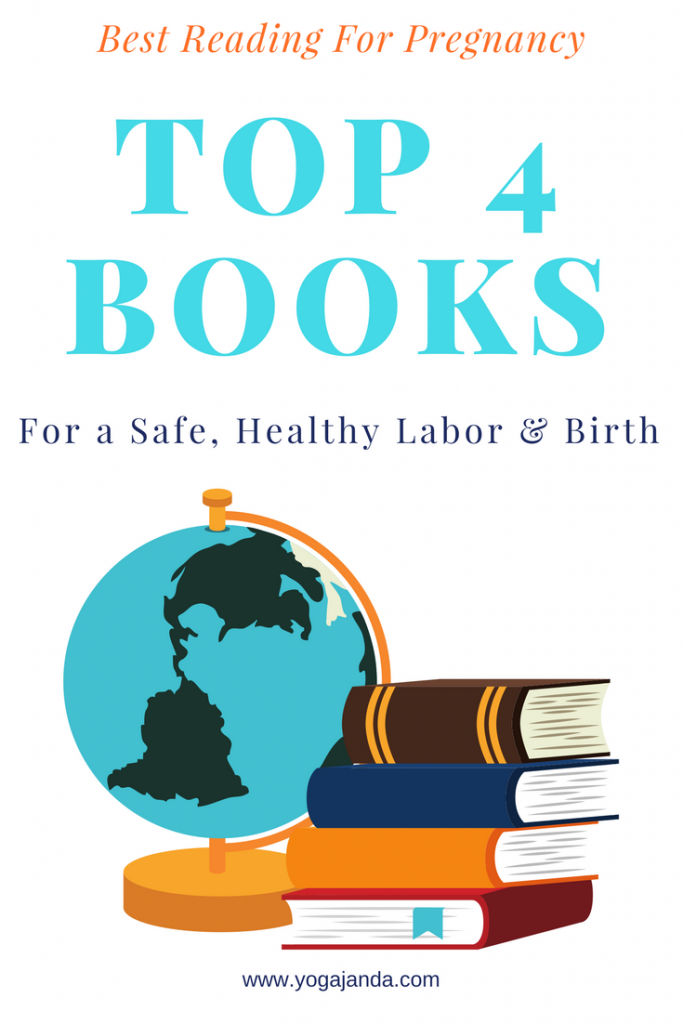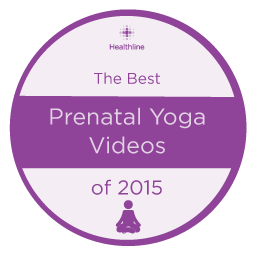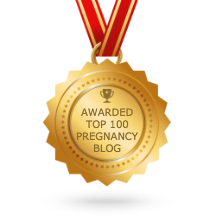If you want a safe and healthy birth for your baby, these are the go-to books. Who doesn’t want a SAFE and HEALTHY birth?
The following books are not what most people read. Most people read the What to Expect series of books. They don’t give much insight into navigating the medicalized pregnancy healthcare model. Those books support it and don’t question any of it. If you want to be a mindful and active participant in your health care, read on. Your mind will be opened. Your body and mind will be prepared physically and emotionally. And you will more likely have a better birth experience for you and your baby.
If you’re the support person for the mom-to-be, this is the #1 book for you.
The Birth Partner, 4th Edition, Completely Revised and Updated: A Complete Guide to Childbirth for Dads, Doulas, and Other Labor Companions
“Natural Birth the Bradley Way” by Susan McCutcheon-Rosegg is a comprehensive guide for expectant parents seeking an alternative to medicated childbirth. Developed by Dr. Robert Bradley, the Bradley Method emphasizes relaxation, deep breathing, and the support of a partner or coach during labor.
McCutcheon-Rosegg provides detailed explanations of the physiological processes of childbirth and outlines various techniques to manage pain and promote a natural birth experience. The book emphasizes the importance of preparation through exercises, proper nutrition, and childbirth education classes.
One of the book’s strengths is its focus on the role of the birth partner. It emphasizes the importance of their involvement in the birthing process, offering guidance on how partners can provide physical and emotional support to the laboring mother.
Additionally, “Natural Birth the Bradley Way” includes real-life birth stories from couples who have successfully used the Bradley Method, which can be reassuring and inspiring for expectant parents.
However, some readers may find the book to be overly prescriptive or dogmatic in its approach, particularly if they are considering other birthing options. The Bradley Method is not for everyone, and some individuals may prefer a more flexible or medicalized approach to childbirth. If you think a natural unmedicated birth is for you and your baby, this is a great book to guide you toward your goal. 100 years of medical research shows the healthiest and safest births are the ones in which you:
- Let labor begin on its own
- Walk, move around, and change positions throughout the labor
- Bring a loved one, friend, or doula for continuous support
- Avoid interventions that are not medically necessary.
- Avoid giving birth on your back and follow your body’s urge to push.
- Keep your baby with you skin-to-skin.
Overall, “Natural Birth the Bradley Way” is a valuable resource for couples seeking a natural childbirth experience and provides practical advice and encouragement for those considering the Bradley Method. However, readers should approach it with an open mind and consider their preferences and needs when planning for childbirth..
Ina May’s Guide To Childbirth by Ina May Gaskin
“Ina May’s Guide to Childbirth” by renowned midwife Ina May Gaskin is a seminal work in the field of natural childbirth and midwifery. Drawing upon decades of experience attending births at The Farm, a pioneering intentional community in Tennessee, Gaskin shares her wisdom, insights, and empowering stories in this comprehensive guide.
One of the standout features of the book is Gaskin’s holistic approach to childbirth, which emphasizes the body’s innate ability to give birth and the importance of creating a supportive environment for laboring women. She offers a wealth of practical advice on how expectant mothers can prepare physically, mentally, and emotionally for childbirth, including relaxation techniques, optimal nutrition, and the benefits of prenatal education and support.
Gaskin’s emphasis on the psychological and emotional aspects of childbirth sets this book apart. She discusses the impact of fear on labor and offers strategies for overcoming it, highlighting the importance of trust, confidence, and positive affirmations in facilitating a smooth birth experience.
Moreover, “Ina May’s Guide to Childbirth” is filled with inspiring birth stories shared by women who have birthed at The Farm under Gaskin’s guidance. These stories illustrate the diversity of childbirth experiences and showcase the power and resilience of women’s bodies.
Critics of medicalized childbirth will appreciate Gaskin’s advocacy for natural birth and her critique of routine interventions in hospital settings. She provides evidence-based information on the risks and benefits of common medical interventions, empowering women to make informed decisions about their care.
However, some readers may find Gaskin’s writing style to be somewhat idealistic or spiritual, which may not resonate with everyone. Additionally, while the book celebrates the joys of natural childbirth, it may not fully address the complexities and challenges that some women may encounter during labor and birth.
Overall, “Ina May’s Guide to Childbirth” is a valuable resource for expectant parents seeking a deeper understanding of the natural birthing process and the role of midwifery care. Gaskin’s expertise, compassion, and advocacy for women’s autonomy make this book essential reading for anyone interested in childbirth and maternal health.
Dr. Sarah Buckley’s Gentle Birth, Gentle Mothering
“Dr. Sarah Buckley’s Gentle Birth, Gentle Mothering” is a groundbreaking book that offers a holistic perspective on pregnancy, childbirth, and early motherhood. Written by Dr. Sarah Buckley, a family physician with a special interest in women’s health and childbirth, the book blends scientific evidence with intuitive wisdom to guide expectant mothers through the journey of pregnancy and birth.
One of the book’s strengths lies in its comprehensive exploration of the physiological processes of childbirth and the interconnectedness of mother and baby during this transformative experience. Dr. Buckley emphasizes the importance of gentle, undisturbed birth practices that respect the innate wisdom of the female body and promote optimal outcomes for both mother and baby.
Throughout the book, Dr. Buckley advocates for a woman-centered approach to childbirth that prioritizes informed decision-making, autonomy, and respectful maternity care. She provides evidence-based information on a wide range of topics, including the benefits of natural birth, the risks of routine interventions, and the importance of skin-to-skin contact and breastfeeding in the early postpartum period.
One of the book’s most compelling aspects is its exploration of the hormonal physiology of childbirth and mother-infant bonding. Dr. Buckley explains how hormonal processes influence the progress of labor, the experience of pain, and the establishment of breastfeeding, offering readers a deeper understanding of the biological underpinnings of childbirth and maternal-infant attachment.
Moreover, “Gentle Birth, Gentle Mothering” is filled with personal anecdotes, birth stories, and practical advice from Dr. Buckley and other mothers, midwives, and childbirth professionals. These stories humanize the childbirth experience and inspire readers to trust in their bodies’ innate ability to give birth and nurture their babies.
Critics of medicalized childbirth will appreciate Dr. Buckley’s critique of routine interventions and her advocacy for gentle, physiologic birth practices. However, some readers may find the book’s emphasis on natural birth and homebirth to be overly idealistic or exclusionary, particularly for those with high-risk pregnancies or medical complications.
Overall, “Gentle Birth, Gentle Mothering” is a valuable resource for expectant mothers seeking a more holistic approach to pregnancy, childbirth, and early motherhood. Dr. Buckley’s blend of scientific expertise, compassionate wisdom, and empowering advocacy makes this book essential reading for anyone interested in gentle birth and mother-infant health and bonding.
Videos For a Healthy Birth











